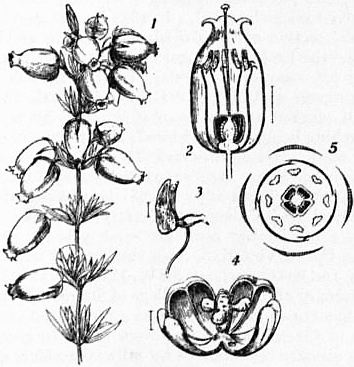committee of senators was appointed to govern the kingdom. One of his illusions was that not he was king but his brother John, whom he now set at liberty. When, at the beginning of 1568, Eric recovered his reason, a reconciliation was effected between the king and the duke, on condition that John recognized the legality of his brother’s marriage with Karin Månsdatter, and her children as the successors to the throne. A month later, on the 4th of July, he was solemnly married to Karin at Stockholm by the primate. The next day Karin was crowned queen of Sweden and her infant son Gustavus proclaimed prince-royal. Shortly after his marriage Eric issued a circular ordering a general thanksgiving for his delivery from the assaults of the devil. This document, in every line of which madness is legible, convinced most thinking people that Eric was unfit to reign. The royal dukes, John and Charles, had already taken measures to depose him; and in July the rebellion broke out in Östergötland. Eric at first offered a stout resistance and won two victories; but on the 17th of September the dukes stood before Stockholm, and Eric, after surrendering Göran Persson to the horrible vengeance of his enemies, himself submitted, and resigned the crown. On the 30th of September 1568 John III. was proclaimed king by the army and the nobility; and a Riksdag, summoned to Stockholm, confirmed the choice and formally deposed Eric on the 25th of January 1569. For the next seven years the ex-king was a source of the utmost anxiety to the new government. No fewer than three rebellions, with the object of releasing and reinstating him, had to be suppressed, and his prison was changed half a dozen times. On the 10th of March 1575, an assembly of notables, lay and clerical, at John’s request, pronounced a formal sentence of death upon him. Two years later, on the 24th of February 1577, he died suddenly in his new prison at Örbyhus, poisoned, it is said, by his governor, Johan Henriksen.
See Sveriges Historia, vol. iii. (Stockholm, 1880); Robert Nisbet Bain, Scandinavia, cap. 4-6 (Cambridge, 1905); Eric Tegel, Konung Eriks den XIV. historia (Stockholm, 1751). (R. N. B.)
 |
| Fig. 1.—Vaccinium vitis-idaea, with leaf and flower, nat. size. 1, Flower of V. myrtillus, cut lengthwise. 2, Fruit of same. |
ERICACEAE, in botany, a natural order of plants belonging to the higher or gamopetalous division of Dicotyledons. They are woody plants, sometimes with a slender creeping stem as in bilberry, Vaccinium (fig. 1), or Andromeda (fig. 2), or forming low bushes as in the heaths, or larger, sometimes becoming tree-like, as in species of Rhododendron. The leaves are alternate, opposite or whorled in arrangement, and in their form and structure show well-marked adaptation for life in dry or exposed situations. Thus in the true heaths they are needle-like, with the margins often rolled back to form a groove or an almost closed chamber on the under side. In others such as Rhododendron or Arbutus they are often leathery and evergreen, the strongly cuticularized upper surface protecting a water-storing tissue situated above the green layers of the leaf. The flowers are sometimes solitary and axillary or terminal as in Andromeda, but are generally arranged in racemose inflorescences at the end of the branches as in Arbutus and Rhododendron, or on small lateral shoots as in Erica. They are hermaphrodite and generally regular with parts in 4 or 5, thus: sepals 4 or 5, petals 4 or 5, stamens 8 or 10 in two series, the outer of which is opposite the petals, and carpels 4 or 5. The corolla is usually more or less bell-shaped, and in the heaths persists in a dry state in the fruit. The petals with the stamens are situated on the outer edge of a honey-secreting disk. The anthers show a very great variety in shape, the halves are often more or less free and often appendaged; they open to allow the escape of the pollen by a terminal pore or slit. The carpels are united to form a 4- to 5-chambered ovary, which bears a simple elongated style ending in a capitate stigma; each ovary-chamber contains one to many ovules attached to a central placenta. The brightly coloured corolla, the presence of nectar and the scent render the flowers attractive to insects, and the projection of the stigma beyond the anthers favours crossing. The fruit is generally a capsule containing many seeds, as in Erica (fig. 3) or Rhododendron; sometimes a berry as in Arbutus.
 |
| Fig. 2.—Andromeda Hypnoides, nat. size. 1, Flower; 2, Unripe fruit cut across; 3, Stamen—all enlarged. |
The order falls into four distinct tribes, which are characterized by the relative position of the ovary and by the fruit and seed. They are as follows:—
1. Rhododendron tribe, characterized by capsular fruit, seed with a loose coat, deciduous petals and anthers without appendages. It consists mainly of the great genus Rhododendron (in which Azalea is included by recent botanists), which is chiefly

